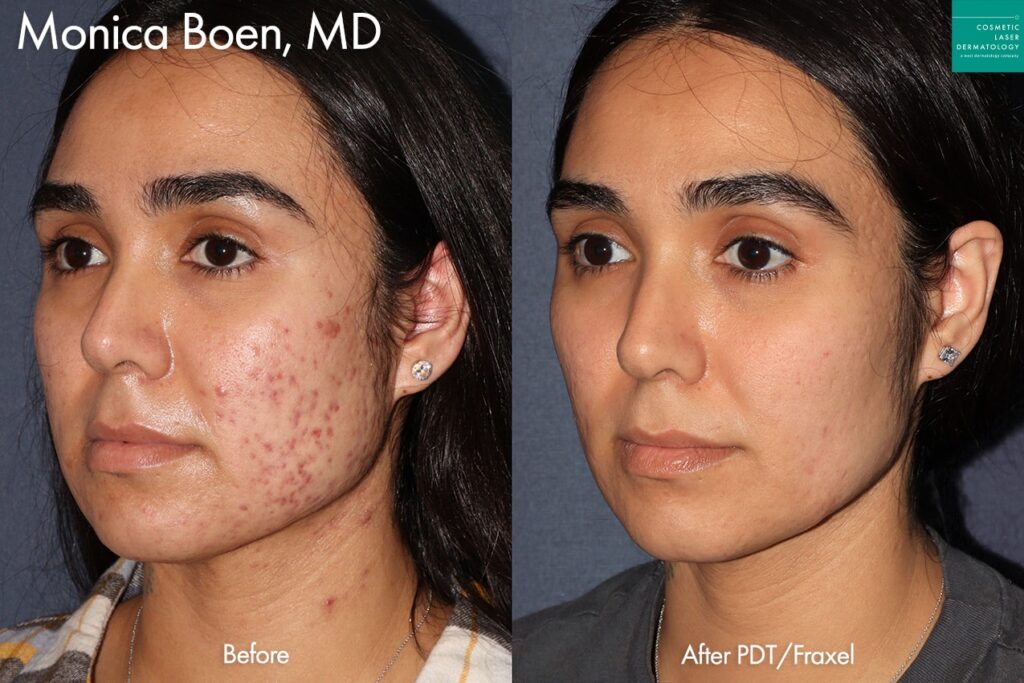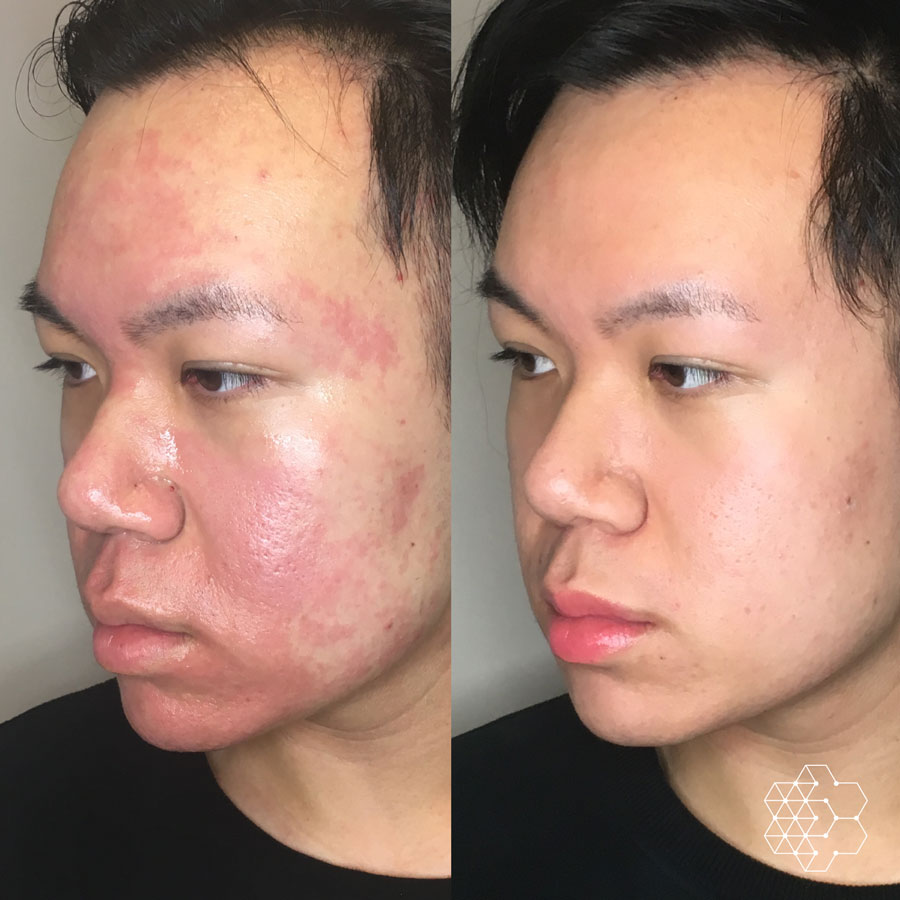Recognizing the Different Skin Conditions and Reliable Therapy Options for Acne Scars
Acne marks represent a complicated interplay of skin disease that considerably influence individuals' self-confidence and general skin wellness. Understanding the distinct sorts of acne marks-- hypertrophic and atrophic-- along with their underlying reasons, is crucial for determining efficient therapy approaches. Different restorative alternatives exist, varying from advanced skin-related treatments to all-natural treatments. Nevertheless, the effectiveness of these therapies frequently rests on individualized assessments by certified specialists. As we explore the landscape of acne mark monitoring, it becomes obvious that the trip toward more clear skin might include greater than simply topical services.
Kinds Of Acne Marks

On the other hand, hypertrophic marks arise from an overproduction of collagen throughout the recovery procedure, bring about elevated areas on the skin. These scars are typically solid and can vary in color, often appearing red or darker than the bordering skin.
Comprehending these kinds of acne scars is vital for developing a reliable treatment strategy - acne scars treatment. Choices may include chemical peels, laser treatment, microneedling, or facial fillers, tailored to the specific scar kind. A thorough consultation with a skin doctor can help establish the most ideal intervention, taking into consideration the individual's skin type, scar seriousness, and overall skin health
Reasons For Acne Scarring
Marking happens as an outcome of the body's all-natural healing response to inflammation and injury triggered by acne sores. When acne types, it triggers an inflammatory action, resulting in the launch of different cytokines and development factors that advertise recovery. Nonetheless, this procedure can often lead to extreme tissue development or insufficient repair service, resulting in marks.
The main sources of acne scarring include the seriousness of the acne itself, duration of the sores, and specific skin types. Severe inflammatory acne, such as blemishes and cysts, is more probable to result in scarring as a result of deeper cells damage. Additionally, improper handling of acne lesions, such as selecting or pressing, can worsen cells injury and inflammation, increasing the likelihood of scarring.
Genetic proneness also plays a considerable function; people with a family history of scarring go to a higher risk. Skin type and color can affect mark development, as darker skin tones may experience post-inflammatory hyperpigmentation, while lighter skin might develop atrophic marks.
Ultimately, understanding these causes is important in taking care of acne and mitigating the possibility for scarring.

Therapy Alternatives for Scarring
Efficient treatment choices for acne scarring differ relying on the kind and extent of the marks. Usually classified into atrophic, hypertrophic, and keloid marks, these problems require tailored techniques for optimum outcomes.
For atrophic marks, which are defined by a loss of cells, treatments such as chemical peels, microdermabrasion, and laser treatment are commonly utilized. These methods advertise skin renewal and promote collagen production, thus enhancing skin structure. Subcision, a minimally intrusive procedure, can additionally be reliable by separating coarse bands under the skin.
Hypertrophic and keloid scars can be extra testing to deal with. Options consist of corticosteroid shots to decrease inflammation and squash the scars. In some situations, cryotherapy or laser therapy may be suggested to reduce their appearance.
Surgical options are offered for severe scarring, where excision or skin grafting may be required. It's necessary for individuals to talk to a skin doctor to assess their particular scar type and talk about one of the most ideal treatment plan. Integrating numerous therapies frequently yields the ideal results, guaranteeing that each patient's distinct skin condition is resolved efficiently.
Natural Home Remedy and Natural Solutions
All-natural services and natural remedy can offer an available approach for people seeking to enhance the look of acne marks (acne and acne scars treatment). Different active ingredients discovered in the home kitchen area have demonstrated possible benefits in enhancing skin texture and advertising healing

Another effective alternative is lemon juice, which functions as an all-natural exfoliant and can lighten hyperpigmentation. Nonetheless, it must be made use of carefully, as it may trigger photosensitivity. Oatmeal masks are likewise advantageous; their gentle exfoliation can assist remove dead skin cells while comforting irritability.
Necessary oils, such as tea tree oil and lavender oil, can even more sustain mark healing due to their antimicrobial residential properties. It is critical to perform a patch examination before applying any type of solution to guarantee there are no unfavorable responses. These natural services can be a corresponding approach in the trip to decrease acne marks.
Stopping Future Scarring
Embracing a proactive strategy to skincare can significantly reduce the threat of creating future acne scars. acne scars One of the key techniques is to take care of acne properly as it arises. This involves using non-comedogenic skin care items and medications recommended by skin doctors that target acne without irritating the skin. Normal cleaning, exfoliation, and hydration can aid maintain skin wellness and protect against clogged pores.
Furthermore, avoiding the lure to select or press acne lesions is essential, as this can lead to inflammation and subsequent scarring. Rather, individuals ought to concentrate on applying topical treatments that advertise recovery and lower swelling. Ingredients such as salicylic acid, benzoyl peroxide, and retinoids are recognized for their efficacy in managing acne and reducing marks.
Sunlight protection is one more crucial element; direct exposure to UV rays can dim marks and hamper recovery. Using a broad-spectrum sun block daily can alleviate these impacts.
Lastly, maintaining a healthy and balanced diet abundant in anti-oxidants and remaining hydrated assistances skin regrowth. By implementing these safety nets, people can considerably lower their threat of future scarring and promote general skin health.
Verdict
To conclude, a detailed understanding of acne marks, including both hypertrophic and atrophic types, is vital for effective treatment strategies. Tailored interventions, consisting of expert treatments and natural home remedy, can substantially boost skin look and texture. Precautionary actions likewise play a vital role in minimizing future scarring. Consultation with a skin doctor stays critical to devise customized strategies that think about individual skin kinds and mark intensity, eventually enhancing the effectiveness of mark administration strategies.
Acne marks represent a complicated interaction of skin problems that dramatically impact people' self-esteem and general skin wellness. The 2 key groups of acne marks are atrophic and hypertrophic marks. These marks are additional identified right into 3 subtypes: ice choice scars, which are deep and narrow; boxcar marks, which are broader and have well-defined edges; and rolling scars, which develop a wave-like look due to unequal skin texture.
A thorough examination with a skin doctor can help figure out the most appropriate intervention, taking into account the individual's skin kind, scar intensity, and total skin health.
Assessment with a skin doctor remains vital to design tailored strategies that think about individual skin kinds and mark severity, ultimately boosting the efficiency of mark monitoring techniques.